Cochiti Pueblo
In Cochiti Pueblo, the act of telling stories and teaching lessons about the community’s history is a vital part of culture. Elders traditionally share their wisdom and experience, which enforces ideas of community and creates a sense of connection for all of Cochiti Pueblo. Expressing stories through pottery is another vital part of this practice, particularly because the Cochiti language Keres does not have a written form.
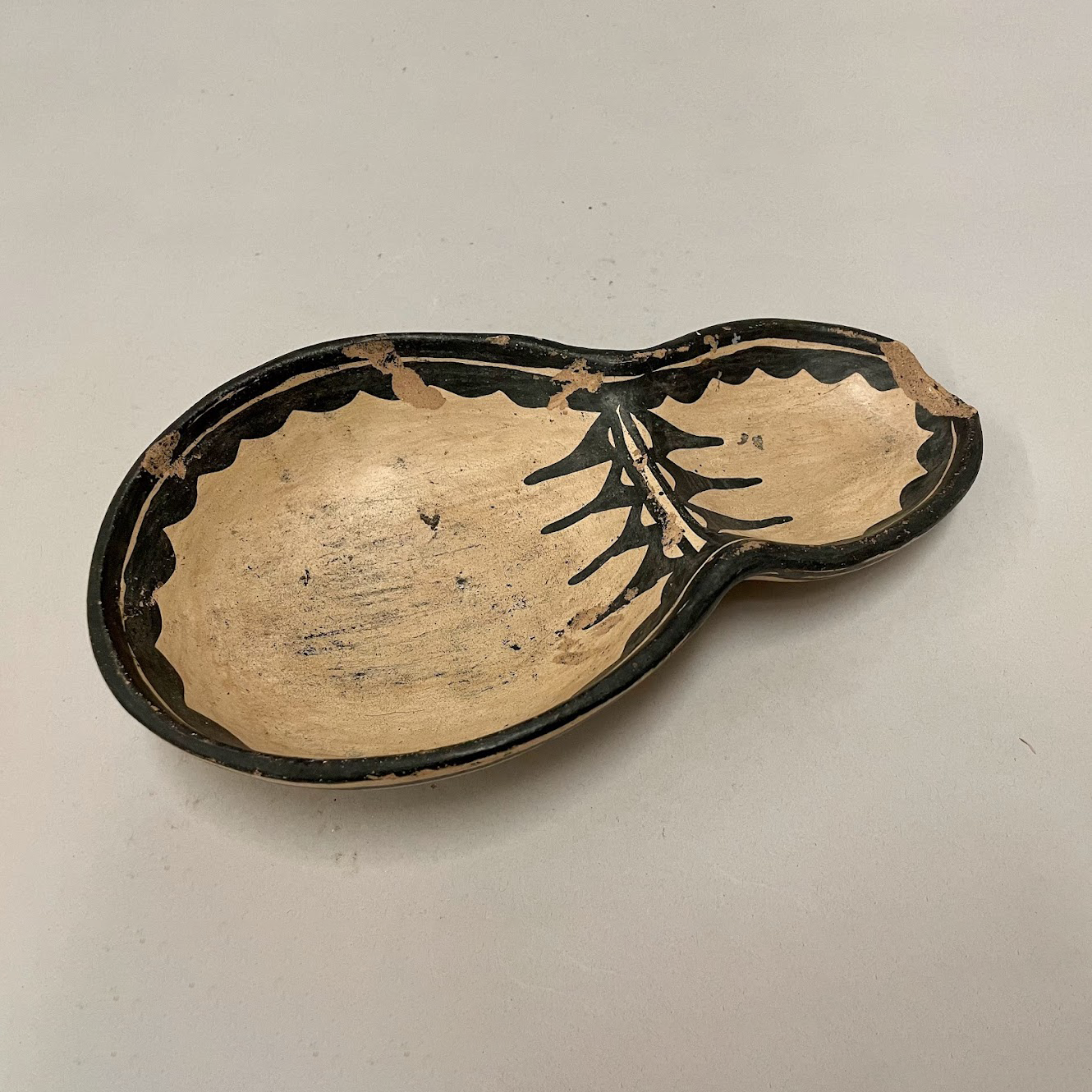
Cochiti bowl
- A common feature of Cochiti pottery is the use of white or crème slip with black designs. The painted details often showcase abstract environmental elements as well as lines which surround the edge of the ceramics, as seen on this piece. The white slip used by Cochiti potters has traditionally been sourced from local environments, but as the supply has depleted over time, ceramicists began using a combination of locally found and commercial materials.
Acoma Pueblo
Acoma pottery has often been used as a vessel for portraying the community’s connection to the natural environment. Animals and weather patterns are common motifs on Acoma pottery. Acoma ceramics are also known for their fine lines, geometric shapes, and abstract environmental elements, which are created with natural pigments. In addition to designs reflecting the natural environment, the craftsmanship of Acoma pottery reflects a connection with ancestors, as the techniques have been taught through generations and are deeply important to community relations and the passing on of traditions.
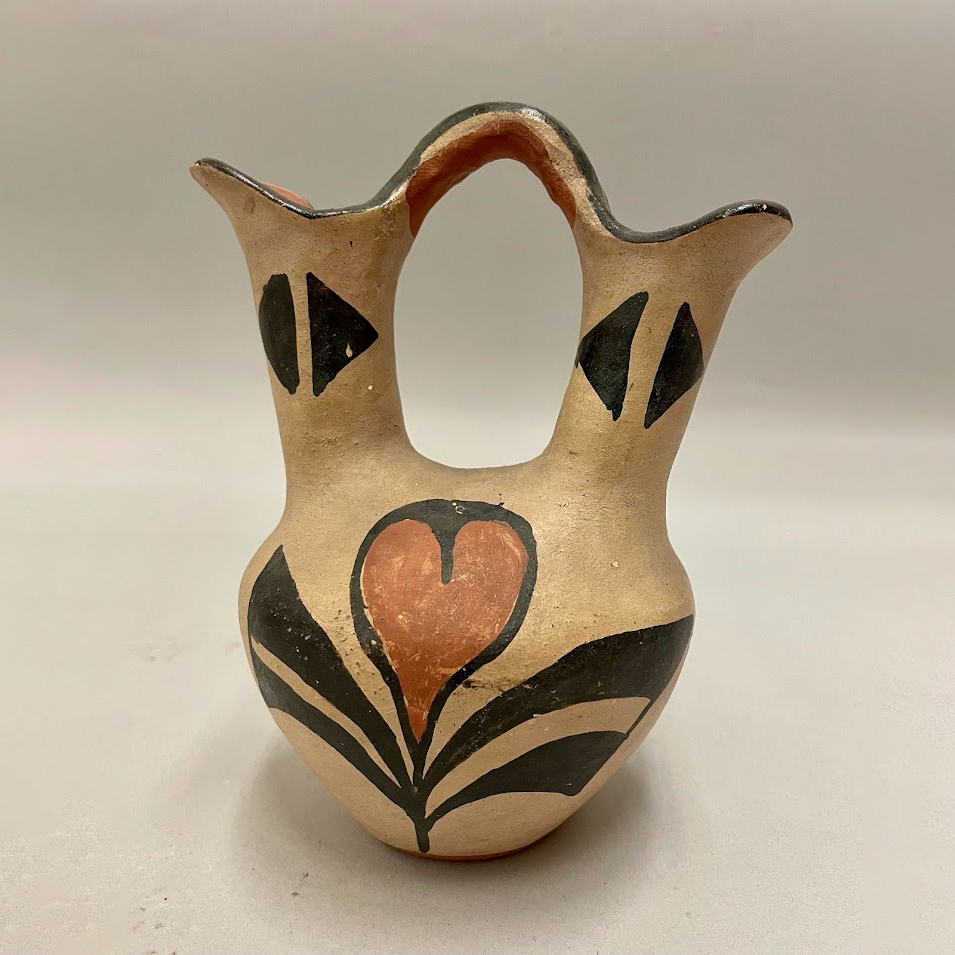
Acoma wedding vase
- This piece demonstrates a common type of pueblo pottery: wedding vases. These generally include three components: the body, two spouts, and a connection between the spouts. This specific shape reflects the unification of families through the marriage of two individuals. Designs depicted on wedding vases can vary depending on the artist’s creative process, but they often reflect values and beliefs that are important to certain communities. This vase's painted design includes a heart-shaped flower, suggesting love and unification.
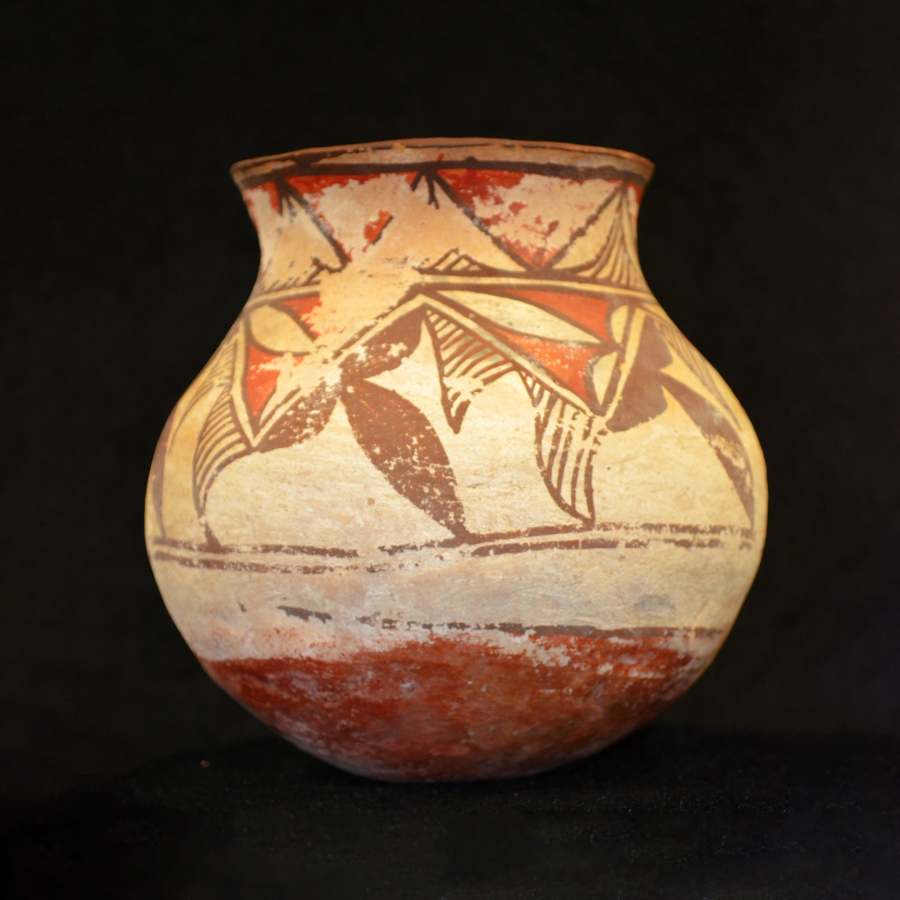
Acoma polychrome jar
- This Acoma jar includes various design features of traditional Acoma pottery, such as leaf patterns which encompass the circumference of the jar, fine lines and geometric patterns, and an orange painted bottom which may represent the earth. Jars like this were commonly used for storage within Acoma communities.
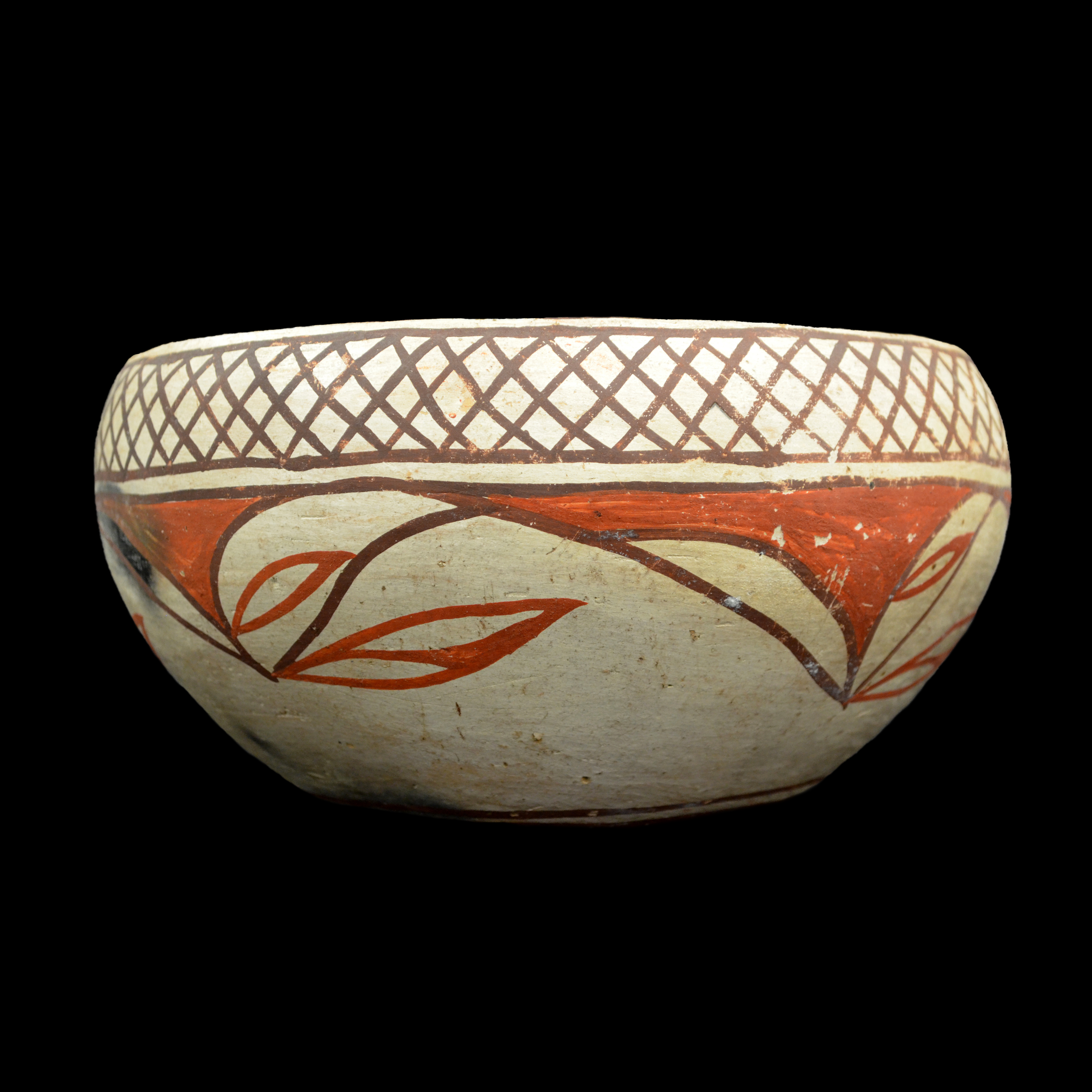
Acoma polychrome bowl
- Acoma pottery often reflects the deep connection the tribe has with the environment. In this bowl, a leaf design moves across most of the surface. The top of the vessel is lined with a geometric hatch design painted with beige pigment. This object was likely created for everyday use, such as storage, eating, or cooking.
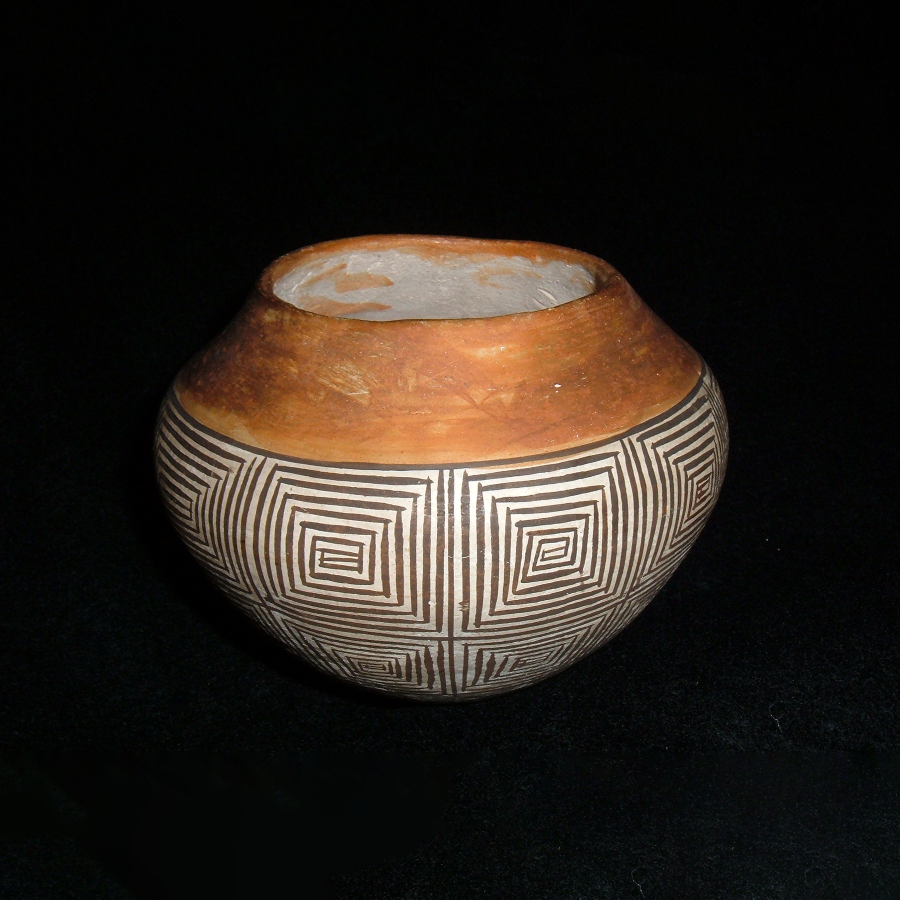
Acoma Fine Line pot
- Fine line geometric designs are a common feature of Acoma pottery. They are often interpreted to represent rain while the orange band lining the top of this pot suggests the sun. This pot's orange and black palette is traditional for Acoma pottery. The time-honored method of creating Acoma pottery incorporates ground shards of old pottery into the new creation; however, this pot is made of fine clay which likely means it was made for commercial use instead of daily functions.
San Ildefonso Pueblo
The pottery of San Ildefonso Pueblo reflects both the changing world around the tribe as well as their traditions, histories, and core beliefs. Pottery styles have evolved over time, but they connect to traditional ceramic forms and processes. This can be seen in the work of twentieth-century potter Maria Martinez and her family, who pushed black-on-black pottery techniques to the forefront of modern San Ildefonso ceramics. While her practice was innovative, it was also rooted in the historic practices of the region—she based her techniques on sherds created by prehistoric Pueblo potters. Deeply connected to the intergenerational sharing of traditions, San Ildefonso pottery represents a significant aspect of the community's culture and relations.
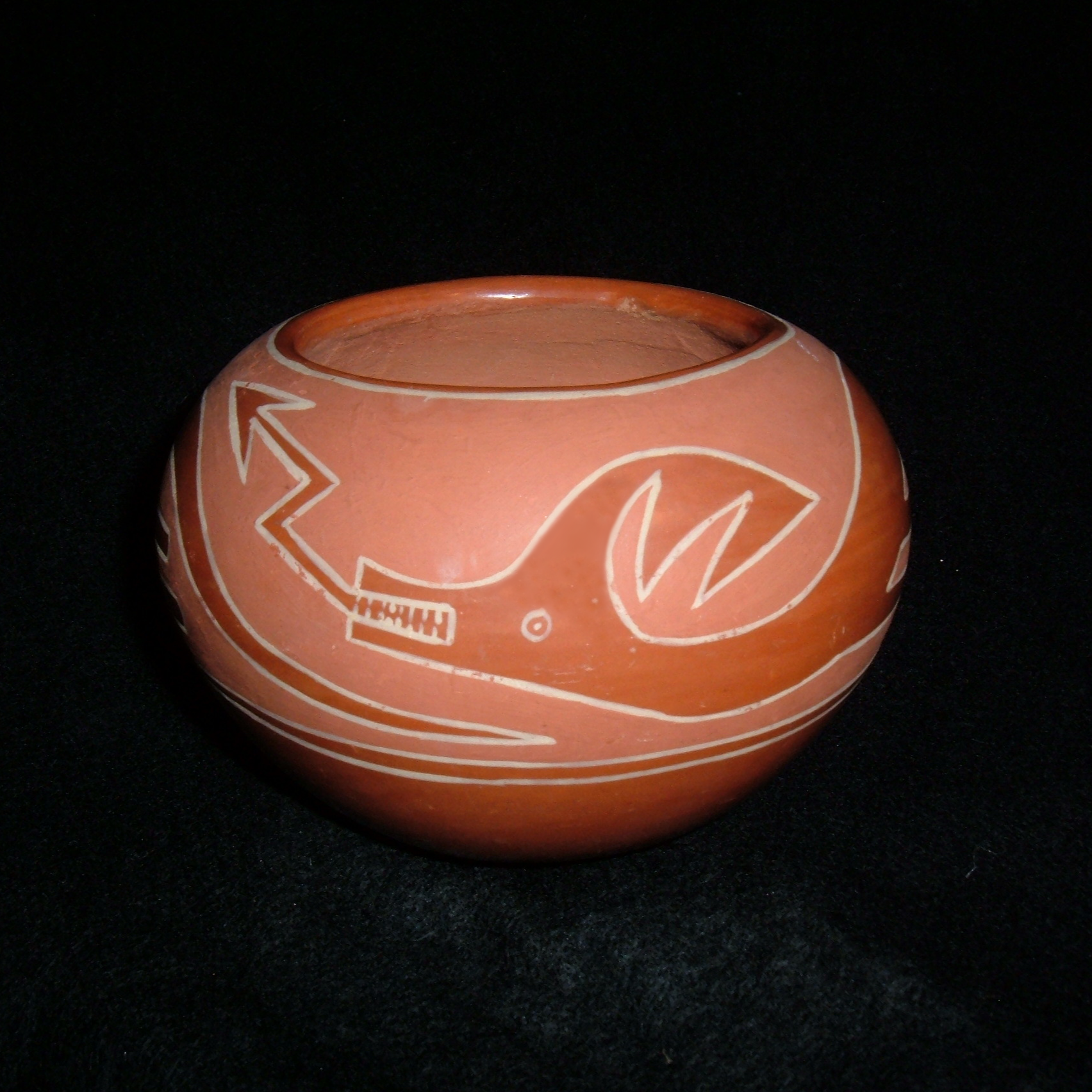
San Ildefonso Pot
-
Native pottery decorations are commonly used to share cultural knowledge and beliefs. This San Ildefonso pot depicts Avanyu, a protective water deity represented as a serpent. Avanyu symbolizes various aspects of the environment, as well as the connection between the earth and the heavens. Avanyu’s unique features, such as the jagged tongue with an arrow at the end, suggest lightning striking the earth and bringing rain to the desert of the American Southwest.
View a similar object in the collection of the Thomas Gilcrease Institute of American History and Art.
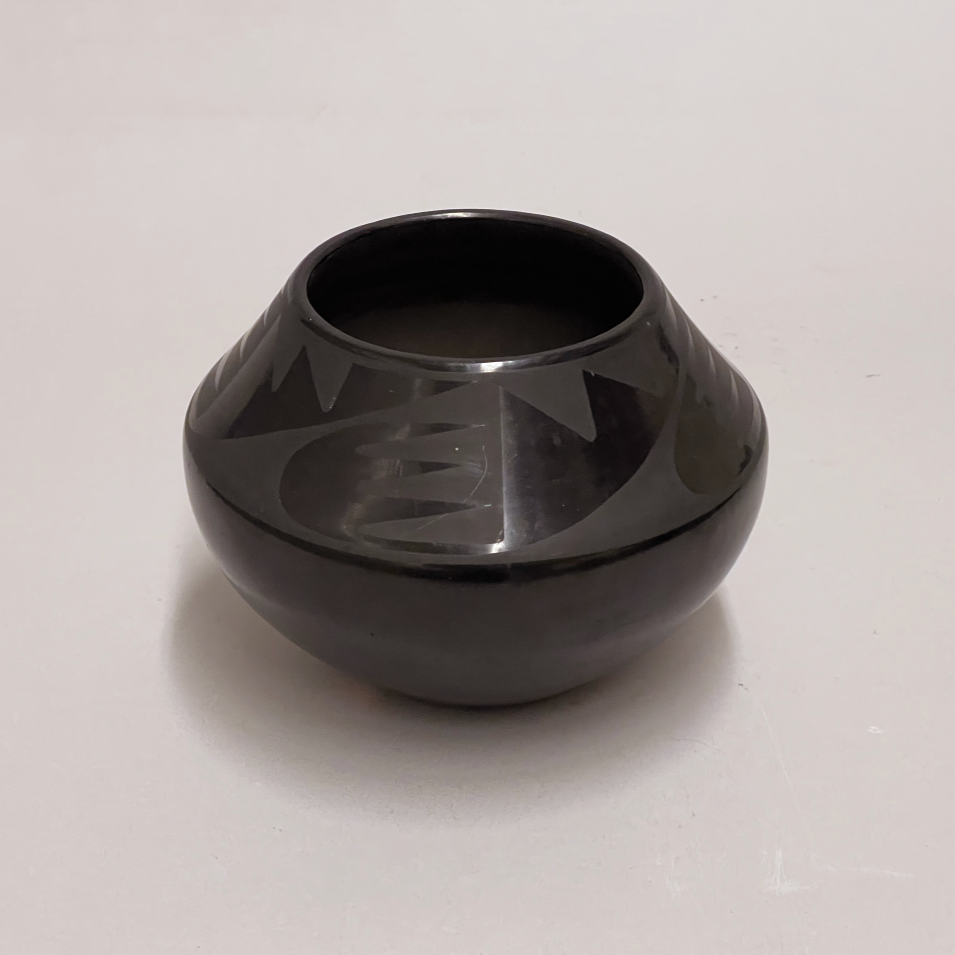
Maria & Julian Martinez, black pot, c. 1925-43
- Maria Martinez of the San Ildefonso Pueblo revitalized a method of creating black-on-black pottery with both a matte and glossy finish. She created the glossy black pot and then her husband, Julian Martinez, painted the matte decorations on to the pot, creating a contrast between the two finishes. Maria went on to teach their children and other family members this style of pottery. Her legacy lives on through the continuation of this unique technique within the San Ildefonso Pueblo community.
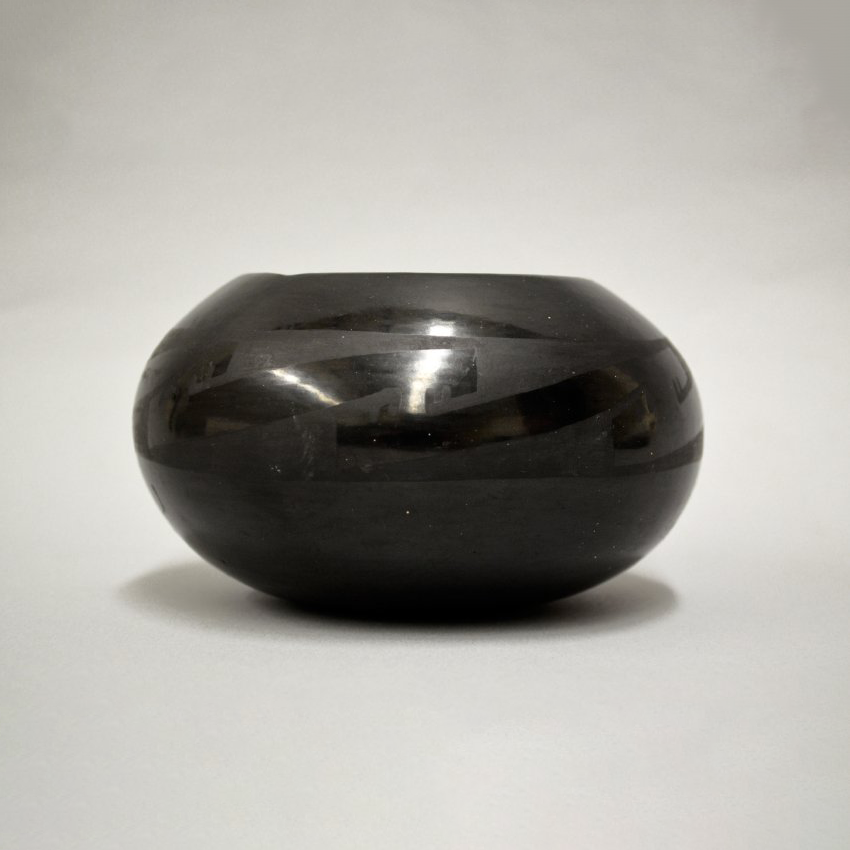
Maria & Julian Martinez, black pot, c. 1920s
- Maria and Julian Martinez perfected the craft of creating black-on-black San Ildefonso pottery. Their ceramics both revitalized and reimagined pottery that pre-historic Pueblo Tribes created. Their work reflected their ancestors and culture in many ways. Julian often painted his matte designs based on ancient symbols as well as his own new ideas. This groundbreaking combination of pre-historic and modern methods was shared with their relatives and other members of the San Ildefonso Pueblo, who carried on the tradition.
Explore more
Learn about Acoma pottery traditions.
Watch archival footage of ceramicists Maria and Julian Martinez.
“Plate.” Denver Art Museum. Accessed April 3, 2025.
“Pueblo Pottery Meaning and Symbolism.” Palms Trading Company (blog). July 28, 2022.
“San Ildefonso Pottery: 1600–1930.” Museum of Indian Arts and Culture. Accessed April 30, 2025.
“The Making of Acoma Pueblo Pottery Explained.” Palms Trading Company (blog). November 18, 2020.
“Vessel Depicting the Water Spirit Avanyu.” Hood Museum. Accessed April 3, 2025.
Bureau of Indian Affairs Museum Program. “The Pueblos of San Ildefonso and Santa Clara: A Ceramic Legacy.” Google Arts and Culture. Accessed April 30, 2025.
Chavarria, Antonio. “Making Pottery, Seeking Life.” Museum of Indian Arts and Culture. Accessed April 30, 2025.
Mustafic, Amber. “Storytellers of Cochiti, Then and Now.” Colorado Springs Fine Arts Center: Collections. April 6, 2019.
West, Racquel. “Wedding Vases: Creative Expression and Resilience within the IARC Collection.” School for Advanced Research. Accessed April 30, 2025.
Wilson, C. Dean. “Cochiti Polychrome.” Office of Archaeological Studies: Pottery Typology Project. 2014.
